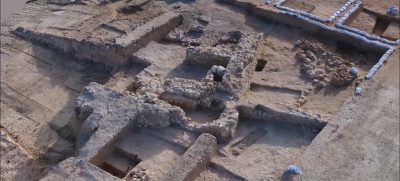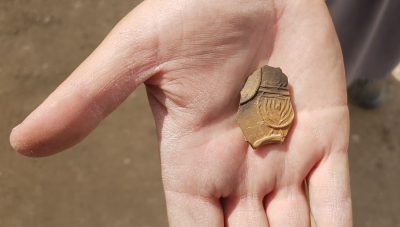×


We have detected your country as:
Please click here to go to the USA website or select another country from the dropdown list.
 For the first time, the remains of a Jewish settlement of the Second Temple period have been discovered in Beersheva, revealing evidence of Jewish day-to-day life there. The site, dated from the first century AD until the Bar Kokhba Revolt in AD 135, appears to contain underground hidden passageways used by the Jewish rebels.
For the first time, the remains of a Jewish settlement of the Second Temple period have been discovered in Beersheva, revealing evidence of Jewish day-to-day life there. The site, dated from the first century AD until the Bar Kokhba Revolt in AD 135, appears to contain underground hidden passageways used by the Jewish rebels.
According to the excavators, Dr. Peter Fabian of the Ben Gurion University of the Negev and Dr. Daniel Varga of the Israel Antiquities Authority (IAA), “Remains of the settlement cover an area of [approximately] 2 dunams (0.5 acres) and include several structures and installations, such as the foundations of a large watchtower, baking facilities, ancient trash pits and an underground system that was probably used as a Jewish ritual bath (mikveh). Signs of a conflagration discovered in some of the structures evince a crisis that the settlement experienced, probably that of the First Jewish Revolt in [around] AD 70.”
The site is located along the southern border of the ancient kingdom of Judah next to a road that led from Tel Beersheva to the southern  coastal plain. The site’s strategic location along the road was probably the reason for the construction of a 10×10-meter (32×32-ft) watchtower, the foundations of which were uncovered in the excavation. The remains of a staircase would have led upward to two upper levels.
coastal plain. The site’s strategic location along the road was probably the reason for the construction of a 10×10-meter (32×32-ft) watchtower, the foundations of which were uncovered in the excavation. The remains of a staircase would have led upward to two upper levels.
Finds uncovered in the excavation included a sherd of an oil lamp of a type known as a Jewish “southern lamp.” There was great excitement when the sherd was cleaned and its decoration revealed: a nine-branched menorah (candelabra). According to Dr. Fabian and Dr. Varga, “This is probably one of the earliest artistic depictions of a nine-branched menorah yet discovered.” Of the few lamps found depicting a menorah, they are never seven-branched. This was in accordance with a ruling in the Babylonian Talmud stating that only the menorah in the Temple could have seven branches. Thus, lamps used in domestic contexts commonly had 8 to 11 branches.
Dozens of bronze coins discovered at the site belong to the period of Roman provincial rule, minted in Ashkelon and other cities throughout the Roman Empire.
Source: Excerpts from an article by the IAA
All logos and trademarks in this site are property of their respective owner. All other materials are property of Bridges for Peace. Copyright © 2024.
Website Site Design by J-Town Internet Services Ltd. - Based in Jerusalem and Serving the World.